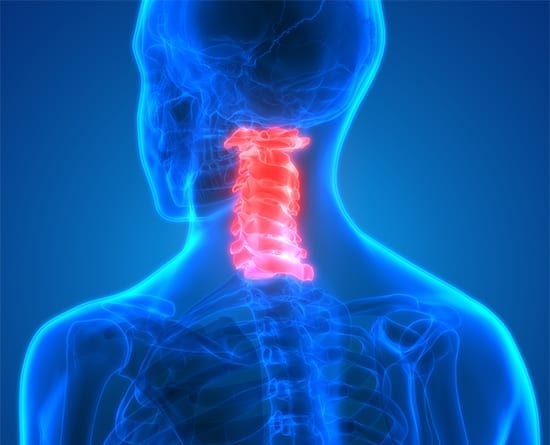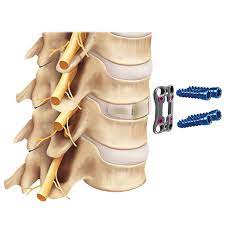

Neck pain is not just uncomfortable—it can wreck your posture, limit your mobility, and make daily life a struggle.
As per bestforwardheadposturefix, “Whether it is from a herniated disc, degenerative disc disease, or a past injury, living with chronic neck discomfort can feel unbearable”.
That is where anterior cervical discectomy and fusion (ACDF) comes in—a surgical procedure designed to relieve nerve compression caused by forward head, stabilize the spine, and improve overall neck alignment.
By removing damaged discs and fusing the vertebrae, ACDF restores proper posture, reduces pain, and prevents further spinal deterioration.
Studies have shown that patients undergoing ACDF experience significant improvements in neck curvature and mobility, making it easier to sit, stand, and move without discomfort.
But what exactly happens during the procedure? And what does recovery look like?
In this article, we will break down how ACDF improves neck posture, its long-term benefits, and what patients can expect post-surgery.
Article Index
- Understanding Anterior Cervical Discectomy and Fusion (ACDF)
- The Connection Between ACDF and Neck Posture
- Benefits of Improved Neck Alignment Post-ACDF
- Recovery and Rehabilitation: What to Expect
- FAQs on Anterior Cervical Discectomy to Fix Text Neck
- Conclusion
Understanding Anterior Cervical Discectomy and Fusion (ACDF)
Anterior cervical discectomy and fusion (ACDF) is a surgical procedure used to relieve spinal cord or nerve root compression in the cervical spine, which often causes chronic pain, weakness, and numbness.
This pressure typically results from herniated discs, degenerative disc disease, or spinal injuries that lead to nerve impingement. Left untreated, these conditions can worsen over time, affecting neck mobility and overall posture.
During ACDF, a surgeon makes a small incision at the front of the neck to reach the damaged disc. The problematic disc is carefully removed, relieving pressure on the nerves.
To fill the empty space, a bone graft or artificial implant is inserted, promoting fusion between the adjacent vertebrae.
Over time, the bones grow together, creating a stable structure that prevents further spinal misalignment.
ACDF not only eliminates nerve compression but also restores proper cervical alignment, helping patients maintain better posture and reducing the risk of further degeneration.
The Connection Between ACDF and Neck Posture
Poor neck posture isn’t just about looking hunched over—it can lead to chronic pain, stiffness, and even nerve damage.
Many people experience poor posture due to spinal conditions like herniated discs or degenerative diseases, which cause misalignment and discomfort over time. Imagine spending years working at a desk, constantly tilting your head forward to look at a screen.
This strain can accelerate disc degeneration, leading to nerve compression, neck misalignment and posture issues.
ACDF corrects this by removing the damaged disc and fusing the adjacent vertebrae, restoring the natural curve of the cervical spine.
This not only relieves nerve pressure but also helps the neck return to its proper alignment, making it easier to hold the head in a neutral position without strain. For example, patients who once struggled with a forward head posture often notice a significant improvement after ACDF.
A study published in the Journal of Orthopaedic Surgery found that patients who underwent ACDF experienced noticeable enhancements in cervical alignment, contributing to better posture and long-term pain relief.
Benefits of Improved Neck Alignment Post-ACDF
Undergoing anterior cervical discectomy and fusion (ACDF) offers multiple benefits beyond pain relief, particularly in improving neck posture and overall quality of life.
- Pain Reduction: By correcting spinal misalignment, ACDF alleviates pressure on compressed nerves, significantly reducing chronic neck and arm pain. Patients often report immediate relief from radiating pain that previously affected their daily activities.
- Enhanced Mobility: Proper spinal alignment allows for smoother neck movements, making it easier to turn, bend, or hold the head in a natural position without discomfort. Those who previously experienced stiffness find improved flexibility post-surgery.
- Prevention of Further Degeneration: ACDF stabilizes the cervical spine, reducing stress on surrounding vertebrae and preventing additional wear and tear. This helps slow the progression of degenerative conditions.
- Improved Quality of Life: With reduced pain and greater mobility, patients can return to work, exercise, and social activities with ease, enjoying a more active and comfortable lifestyle.
Recovery and Rehabilitation: What to Expect
Recovering from anterior cervical discectomy and fusion (ACDF) is a gradual process that involves multiple stages. While the surgery itself addresses spinal issues, proper post-operative care ensures long-term success in improving neck posture and overall well-being.
Immediate Post-Surgery: Managing Early Discomfort
In the first few days after ACDF, patients may experience neck stiffness, soreness, and mild discomfort, which gradually improves over the following weeks. A cervical brace is often recommended to fix nerd neck, provide support, prevent unnecessary movement, and allow the spine to heal properly.
Rest is crucial during this stage, and patients should avoid sudden neck movements or straining activities.
Physical Therapy: Strengthening the Neck and Back
Once initial healing is underway, physical therapy plays a key role in recovery. Strengthening exercises for the neck, shoulders, and upper back help improve posture and prevent muscle stiffness.
Gentle stretches and mobility exercises (such as neck tilts) are introduced gradually, allowing patients to regain flexibility without putting strain on the fused vertebrae.
Lifestyle Adjustments for Long-Term Success
Maintaining good posture is essential for preventing future spinal issues. Patients are advised to avoid heavy lifting, prolonged screen time without breaks, and poor sleeping positions. Ergonomic adjustments, such as using a height adjustable chair and keeping screens at eye level, can further aid recovery.
According to Alberta Health Services, most patients can return to work within 4 to 6 weeks, depending on the nature of their job and personal healing progress. Those with physically demanding jobs may require additional recovery time.
FAQs on Anterior Cervical Discectomy to Fix Text Neck
Q-1: How can ACDF change my head-and-neck “stack” even if my pain started as a pinched nerve?
A-1: By clearing the disc/osteophyte that’s crowding the nerve and then restoring disc height with a spacer, ACDF re-opens the front of the segment and lets the surgeon set a slight lordotic angle. That small, targeted correction often nudges the whole neck toward a more natural curve.
With less pain and more space, you stop guarding, shoulder elevators relax, and your head migrates back over your shoulders—subtly improving forward-head posture.
Q-2: What alignment numbers do surgeons look at when planning a posture-friendly ACDF?
A-2: Two common guides are the overall C2 cervical spine to C7 lordosis (your neck’s “C” curve) and the C2–C7 sagittal vertical axis (how far the head sits in front of the chest).
Surgeons also consider how your T1 slope (the base angle of your neck) “matches” your cervical lordosis. If the curve they create at the treated level harmonizes with those global angles, you’re more likely to stand and sit with less chin poke.
Q-3: Does the choice of implant actually change posture outcomes?
A-3: Yes. Lordotic interbody cages and well-contoured plates help build a gentle “ramp” at the fused level, supporting global lordosis instead of flattening it.
Restoring disc height also widens the foramina, which reduces nerve irritation and muscle guarding—two quiet posture killers. The right cage height and angle are chosen to correct without over-stretching tissues.
Q-4: Why can posture keep improving months after ACDF—even before fusion is fully mature?
A-4: Once compression is relieved, pain circuits calm and deep stabilizers (like the deep neck flexors) begin firing more efficiently in therapy. With better motor control, you rely less on shrug muscles to hold up the head.
As you practice sphinx yoga pose, scapular retraction exercises, and mid-back extension, your nervous system “re-maps” a more efficient default—so your neutral stance feels natural rather than forced.
Q-5: What can I do post-op to lock in posture gains from ACDF?
A-5: Think “three anchors”: (1) Ergonomics—monitor at eye level, forearms supported, frequent micro-breaks. (2) Motor control—daily sets of gentle chin tucks, scapular retraction, and thoracic extension on a bench. (3) Walking cadence—regular brisk walks cue arm swing and mid-back mobility that reinforce a head-over-sternum stance. Combine these with your therapist’s progression; as fusion consolidates, these anchors make the surgical alignment your new normal rather than a clinic-only posture.
Final Words
Are you struggling with chronic neck pain, poor posture, or limited mobility?
Anterior cervical discectomy and fusion (ACDF) is a highly effective surgical procedure designed to relieve neck pain, restore spinal alignment, and improve overall quality of life.
Many patients experience significant pain relief after ACDF, allowing them to move more freely, sit and stand with better posture, and return to daily activities without constant discomfort.
By stabilizing the spine and correcting disc degeneration, ACDF helps reduce pressure on nerves, minimizing symptoms like numbness, tingling, and weakness.
If chronic neck pain, herniated discs, or spinal misalignment are affecting your well-being, ACDF may be the solution you need.
However, it is crucial to consult with a board-certified spine specialist to determine if this procedure is right for you. Schedule a consultation today to learn how ACDF can help you regain mobility and live pain-free.
References:


